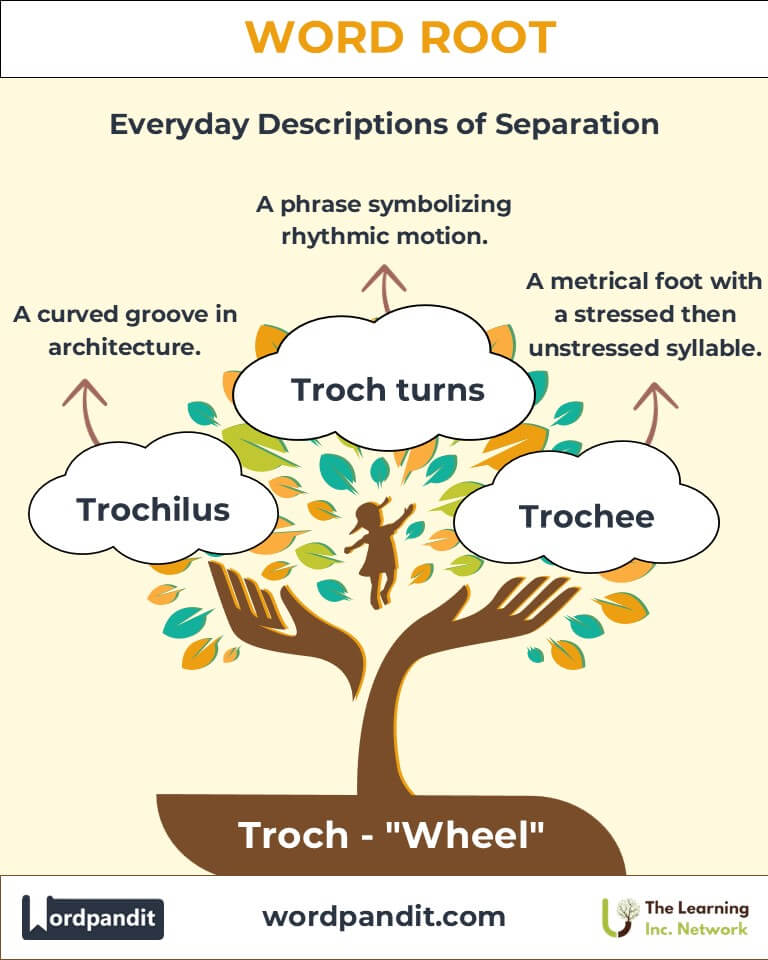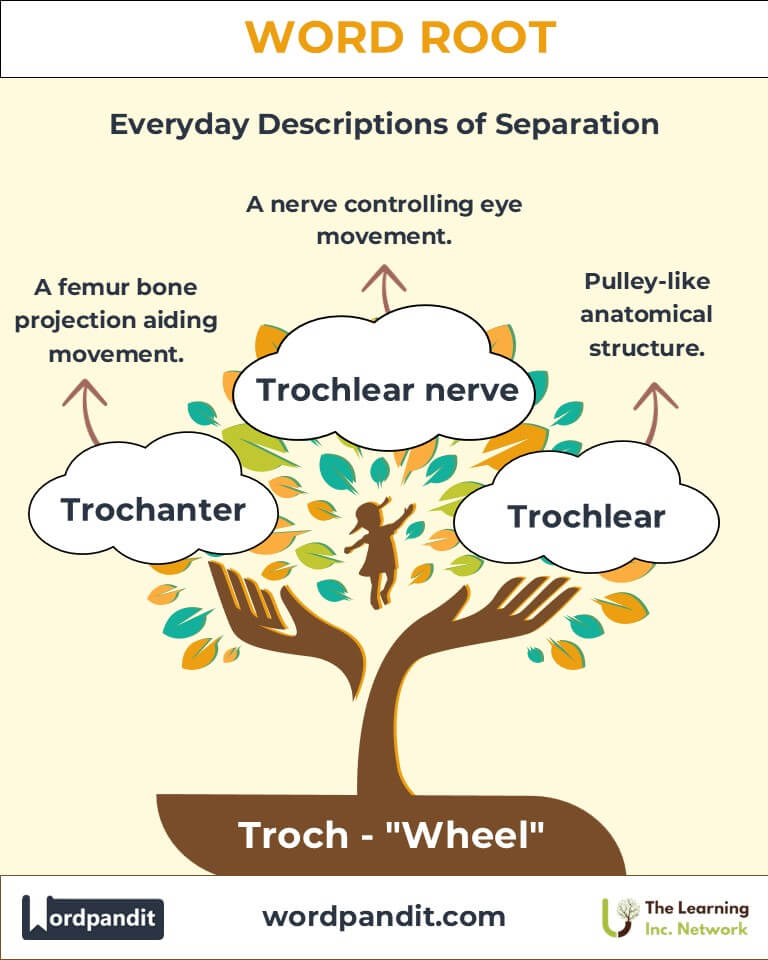Troch: The Wheel of Words in Motion and Anatomy
Discover the linguistic and anatomical significance of "Troch," a root derived from Greek meaning "wheel." From poetic meters to human anatomy, "Troch" underpins words that reflect motion, rhythm, and pivotal structures.

Table of Contents
- Introduction: The Dynamic Nature of "Troch"
- Etymology and Historical Journey
- Mnemonic: Unlocking the Power of "Troch"
- Common Troch-Related Terms
- "Troch" Through Time
- "Troch" in Specialized Fields
- Illustrative Story: "Troch" in Action
- Cultural Significance of the Troch Root
- The Troch Family Tree
- FAQs about the Troch Word Root
- Test Your Knowledge: Troch Mastery Quiz
- Conclusion: The Enduring Motion of "Troch"
1. Introduction: The Dynamic Nature of "Troch"
The root "Troch" (pronounced "trok") originates from the Greek word trochos, meaning "wheel." This root symbolizes motion, rotation, and pivotal mechanisms in both language and anatomy. From the metrical term "trochee," which adds rhythm to poetry, to "trochanter," a critical part of the femur, "Troch" reflects the wheel-like aspects of structure and movement.

2. Etymology and Historical Journey
The root "Troch" finds its origin in the Greek trochos ("wheel") and the verb trekhein ("to run or rotate"). In ancient times, wheels symbolized progress and movement, a concept that carried into linguistic and anatomical applications. The term "trochee," describing a poetic metrical foot with a long followed by a short syllable, reflects a rhythmic wheel-like motion. Similarly, in anatomy, the "trochanter" marks a rotational pivot, crucial in mobility.
3. Mnemonic: Unlocking the Power of "Troch"
Picture a spinning wheel generating motion and rhythm, propelling a poet’s words or a runner's stride.
Mnemonic Device: "Troch turns the wheel of rhythm and motion."
4. Common Troch-Related Terms
- Trochee (troh-kee): A metrical foot in poetry consisting of one stressed syllable followed by an unstressed syllable.
- Trochanter (troh-kan-ter): A bony prominence near the femur, serving as an attachment point for muscles.
- Trochlear (trok-lee-er): Relating to a pulley-like structure, especially in anatomy (e.g., the trochlear nerve).
- Trochilus (trok-il-us): A small groove or architectural feature resembling a wheel.
5. "Troch" Through Time
Trochee in Ancient Poetry
Greek poets used the trochee to create rhythmic movement in lyrical compositions, reflecting its origin as "a rolling motion."
Trochanter in Modern Medicine
The discovery of the trochanter’s importance in hip anatomy during the Renaissance reshaped orthopedic studies.
6. "Troch" in Specialized Fields
Medicine
- Trochanter: Integral in diagnosing hip injuries and designing prosthetics.
- Trochlear nerve: Essential for understanding eye movement disorders.
Poetry and Literature
- Trochee: A fundamental metrical element in prosody, adding rhythm and motion to verse.
7. Illustrative Story: "Troch" in Action
In ancient Greece, a poet named Lysandra used the trochee to craft verses that mimicked the rhythm of chariot wheels racing across the battlefield. Centuries later, an orthopedic surgeon, Dr. Elena Trochlis, drew inspiration from the same rhythmic concept while designing a revolutionary hip joint implant.
8. Cultural Significance of the Troch Root
The "Troch" root echoes humanity’s reliance on wheels for movement and rhythm. In literature, it lends dynamism to poetic forms, while in science, it supports our understanding of anatomy.

9. The Troch Family Tree
- Rot (Latin: "to turn"): Rotation, rotunda
- Cycl (Greek: "circle"): Cycle, encyclopedia
- Gyr (Greek: "ring, circle"): Gyroscope, gyration

FAQs About the Troch Word Root
Q: What does "Troch" mean?
A: "Troch" means "wheel" and conveys motion, rotation, or pivotal mechanisms. Derived from the Greek trochos ("wheel") and trekhein ("to run"), it appears in various contexts like poetic rhythm and anatomical structures associated with movement.
Q: What is a trochanter?
A: The trochanter is a bony prominence on the femur, located near the hip joint. It serves as an anchor point for muscles, enabling hip and leg movement.
Q: How is "Troch" used in poetry?
A: In poetry, "Troch" appears in the term "trochee," a metrical foot comprising one stressed syllable followed by an unstressed syllable, creating a rolling, rhythmic motion.
Q: What does the trochlear nerve do?
A: The trochlear nerve, the fourth cranial nerve, controls the superior oblique muscle of the eye. This muscle facilitates downward and inward eye movement.
Q: Is "Troch" relevant in architecture?
A: Yes, in architecture, "Troch" appears in the form of a trochilus, a groove or recess resembling the curvature of a wheel, commonly found in classical column designs.
Test Your Knowledge: Troch Mastery Quiz
1. What does the root "Troch" mean?
2. What is a trochee in poetry?
3. What is the function of the trochanter?
4. Which nerve is associated with "Troch"?
5. What architectural feature relates to "Troch"?
12. Conclusion: The Enduring Motion of "Troch"
The root "Troch" seamlessly bridges the worlds of rhythm, anatomy, and design, echoing the significance of wheels in motion and structure.












